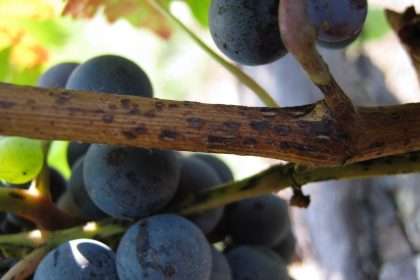This is another reminder about downy mildew. This post is probably more applicable to those of us who are in northern VA. We received several rain events in the past two weeks. Not all of them accounted for downy mildew infection risk events; however, recent warm and humid nighttime weather probably encouraged the downy mildew pathogen to produce spores.
Here are recent downy mildew infection risks based on the NEWA’s DMCast.
Floyd, VA: Downy mildew risk events on 7/6, 11, and 15.
(note: the temperature sensor has been fixed recently, and that’s why it shows records from mid-June.)

Red Hill, VA and Olympic Lake: If you are in central VA, please check your local weather station. It seems that the numbers vary quite a bit among them.
Red Hill: downy mildew risk events on 7/2 and 8.

Olympic Lake, downy mildew risk events on 7/2, 6, 8, 11, 12, 15, and 16.

Winchester, VA: downy mildew risk events on 7/1, 5, 9, and 13.

Protective materials for downy mildew are Ziram (FRAC M3, 21-day PHI), Captan (FRAC M4), Fixed copper (FRAC M1), Revus or Forum (FRAC 40), or Zampro (FRAC 40 + 45), or Ranman (FRAC 21)).
- There are increasing cases of Revus resistant downy mildew isolates in VA. Plus, resistance to Ranman is known among downy mildew pathogens of other crops, and the label requires you to mix with another fungicide that has activity against downy mildew (e.g., captan, phosphorous acid, etc.) Make sure to spray before the rain and rotate the FRAC codes!
Materials with kick-back activities are Phosphorous acids (Prophyt, Phostrol, etc, FRAC P07), and Ridomil products (FRAC 4, make sure to check the PHI since Gold MZ has a 66-day PHI). If you think your previous application was washed off before the recent rain events, it is probably a good idea to add a Phos acid to your tank mix.
- It is a good idea to tank-mix a phosphorous acid and a protective material, especially your cultivar(s) is sensitive to downy mildew.
- Please do not mix a phosphorous acid product with copper. Our results show a high probability of causing phytotoxicity.


